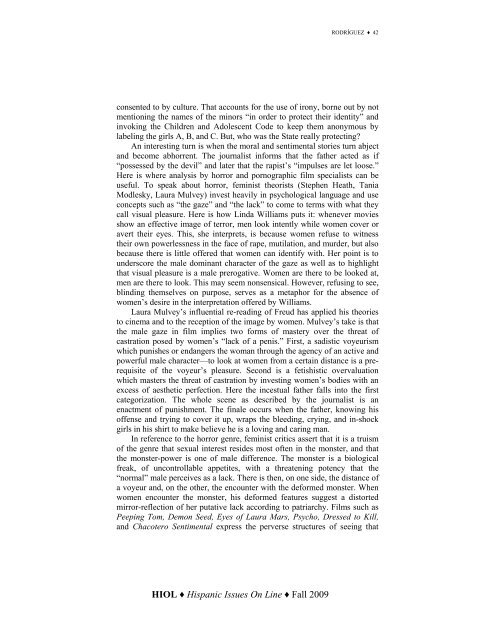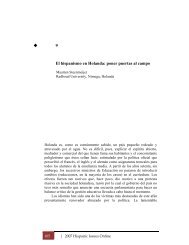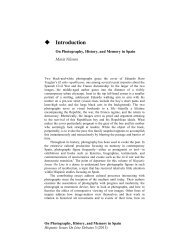Human Rights/Sexual Desires: Incest/Pedophilia/Rape
Human Rights/Sexual Desires: Incest/Pedophilia/Rape
Human Rights/Sexual Desires: Incest/Pedophilia/Rape
Create successful ePaper yourself
Turn your PDF publications into a flip-book with our unique Google optimized e-Paper software.
RODRÍGUEZ ♦ 42<br />
consented to by culture. That accounts for the use of irony, borne out by not<br />
mentioning the names of the minors “in order to protect their identity” and<br />
invoking the Children and Adolescent Code to keep them anonymous by<br />
labeling the girls A, B, and C. But, who was the State really protecting<br />
An interesting turn is when the moral and sentimental stories turn abject<br />
and become abhorrent. The journalist informs that the father acted as if<br />
“possessed by the devil” and later that the rapist’s “impulses are let loose.”<br />
Here is where analysis by horror and pornographic film specialists can be<br />
useful. To speak about horror, feminist theorists (Stephen Heath, Tania<br />
Modlesky, Laura Mulvey) invest heavily in psychological language and use<br />
concepts such as “the gaze” and “the lack” to come to terms with what they<br />
call visual pleasure. Here is how Linda Williams puts it: whenever movies<br />
show an effective image of terror, men look intently while women cover or<br />
avert their eyes. This, she interprets, is because women refuse to witness<br />
their own powerlessness in the face of rape, mutilation, and murder, but also<br />
because there is little offered that women can identify with. Her point is to<br />
underscore the male dominant character of the gaze as well as to highlight<br />
that visual pleasure is a male prerogative. Women are there to be looked at,<br />
men are there to look. This may seem nonsensical. However, refusing to see,<br />
blinding themselves on purpose, serves as a metaphor for the absence of<br />
women’s desire in the interpretation offered by Williams.<br />
Laura Mulvey’s influential re-reading of Freud has applied his theories<br />
to cinema and to the reception of the image by women. Mulvey’s take is that<br />
the male gaze in film implies two forms of mastery over the threat of<br />
castration posed by women’s “lack of a penis.” First, a sadistic voyeurism<br />
which punishes or endangers the woman through the agency of an active and<br />
powerful male character—to look at women from a certain distance is a prerequisite<br />
of the voyeur’s pleasure. Second is a fetishistic overvaluation<br />
which masters the threat of castration by investing women’s bodies with an<br />
excess of aesthetic perfection. Here the incestual father falls into the first<br />
categorization. The whole scene as described by the journalist is an<br />
enactment of punishment. The finale occurs when the father, knowing his<br />
offense and trying to cover it up, wraps the bleeding, crying, and in-shock<br />
girls in his shirt to make believe he is a loving and caring man.<br />
In reference to the horror genre, feminist critics assert that it is a truism<br />
of the genre that sexual interest resides most often in the monster, and that<br />
the monster-power is one of male difference. The monster is a biological<br />
freak, of uncontrollable appetites, with a threatening potency that the<br />
“normal” male perceives as a lack. There is then, on one side, the distance of<br />
a voyeur and, on the other, the encounter with the deformed monster. When<br />
women encounter the monster, his deformed features suggest a distorted<br />
mirror-reflection of her putative lack according to patriarchy. Films such as<br />
Peeping Tom, Demon Seed, Eyes of Laura Mars, Psycho, Dressed to Kill,<br />
and Chacotero Sentimental express the perverse structures of seeing that<br />
HIOL ♦ Hispanic Issues On Line ♦ Fall 2009






